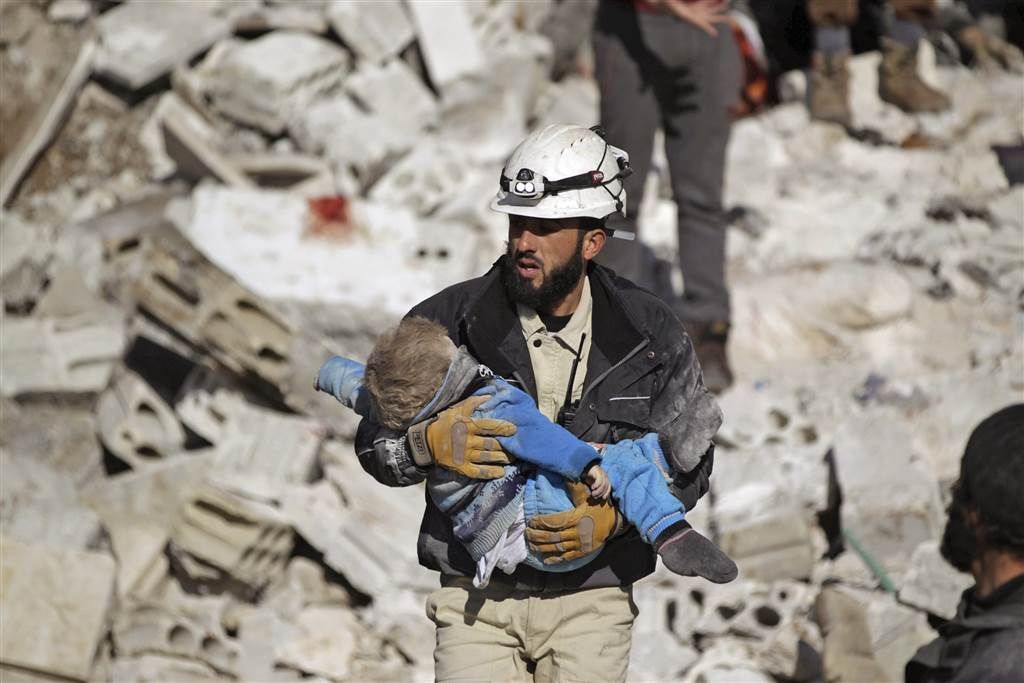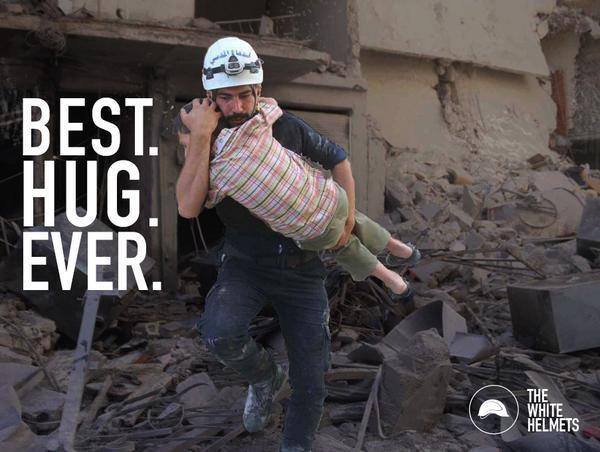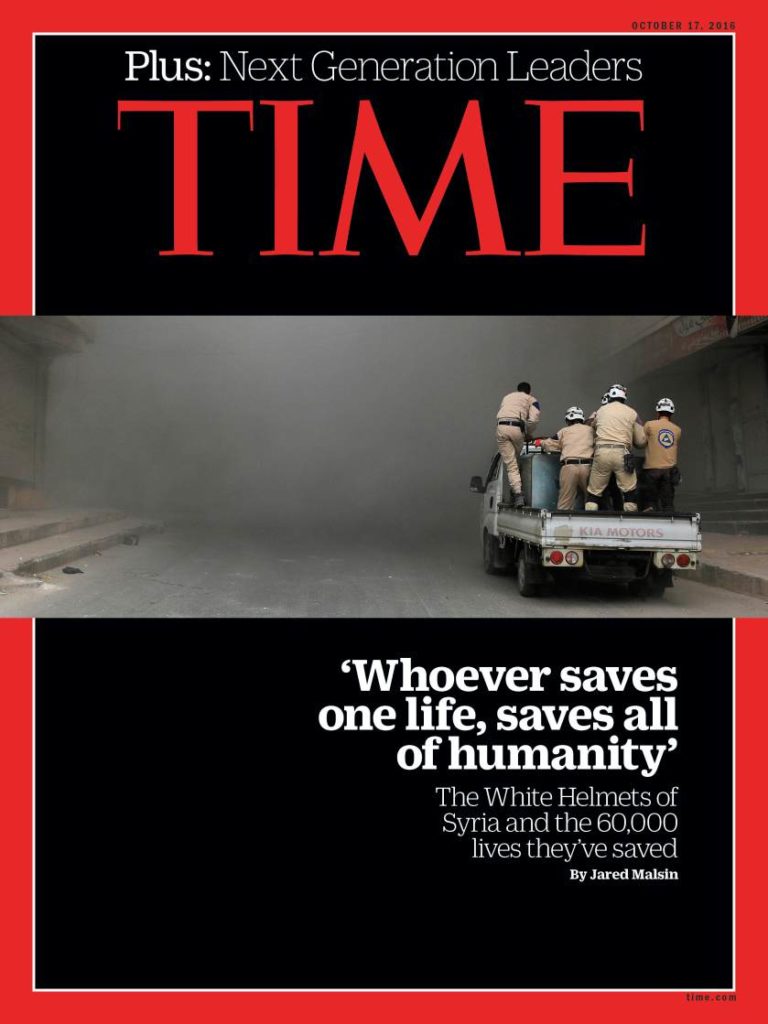Partnering with the White Helmets
It seems strange to think of now, but there was a time when the White Helmets were barely known outside of Syria. In 2014, we were desperate to mobilise global public opinion against the aerial war being perpetrated by the regime and Russia against Syrian civilians. The scale of the bombardment and that civilians were the primary target was scarcely understood. The images were so graphic that people were inevitably looking away and could not connect to the experiences of civilians on the ground. Among the media, there was also the prevailing narrative that there were “no good guys” in Syria, and the war was between the regime, terrorists, and Islamists, making intervention impossible.
The White Helmets campaign was primarily focused around storytelling, and the need to explain the truth about what was happening on the ground. We began to notice that in areas that were being barrel-bombed, photos were emerging of young men carrying injured children away from the rubble. These brave volunteers were part of a group known as the Syria Civil Defence (to this day, they are known both by this name and as the ‘White Helmets’). After connecting and speaking with the Syria Civil Defence, we decided together that by raising the profile of their lifesaving work, we could build awareness of the ongoing airstrikes and the impact of the bombing of Syria.

The first thing we did, which was crucial to our ability to tell the story of the White Helmets effectively, was embed ourselves with dozens of their volunteers for one week while they were undergoing training in Turkey. This helped us get to know the White Helmets as individuals and hear the stories of their rescues firsthand. This time spent together was far more effective than remote interviews, which can take on a more formal tone and make it difficult for people to open up.
Creativity
The initial campaign revolved around three key pillars, the first of which was creativity. We published three videos, including ‘the Miracle Baby’ video, where we interviewed one of the volunteers present for the rescue of a baby, which went viral. We also made grabby, inspiring social media images with bold white lettering signposting the White Helmets’ dedication and determination—e.g. “No Days Off”, “Best. Hug. Ever.”

Public Support
The second pillar was around public support. We wanted to change the feeling of disempowerment that people were experiencing and give them an effective action they could take to stand with civilians in Syria. We launched a petition on a new website for the White Helmets’ to donor governments to increase support for the group so that they could have all the equipment necessary to save lives from under the rubble. People anywhere could sign this petition as a form of support for the White Helmets.
A clear call-to-action is an essential part of any campaign. Supporters must feel that what they’re being asked to do makes sense, and there’s a clear theory of change around how their actions will make a difference.
The Media
The third pillar was around the media. The White Helmets are now a household name but this wasn’t the case in their early days. Although we were impatient for the world to know about these heroes and support them, media and public awareness built gradually over time, feature piece by feature piece. We met with journalists and, wherever possible, we tried to make sure they got the opportunity to attend training and sit down with these heroes face to face just like we did.

In an article titled, ‘Meet the Bravest People in Syria’, a journalist from the Huffington Post wrote: “By going where nobody else will go, the more than 1,000 members of the group serve as a source of hope in otherwise hopeless situations.” A journalist from FairPlanet added: “These young men head out every day to save lives – fully aware that more bombs may fall on the same site.”
“These young men head out every day to save lives – fully aware that more bombs may fall on the same site.”
Eventually, the campaign soared, and we saw a staggering amount of public support for the White Helmets, evidenced by donations. Thousands of people from around the world have donated to the White Helmets since 2014.
The reasons why this campaign worked were partnership and investment. All campaign activities and content were designed in partnership with the White Helmets and in response to their needs. We spent years on this work which continues to this day.
What we learnt
Stories about heroes are especially moving and allow people to connect with your cause. It’s critical that after you tell a story, you give people an action they can take so that they feel empowered rather than disempowered.